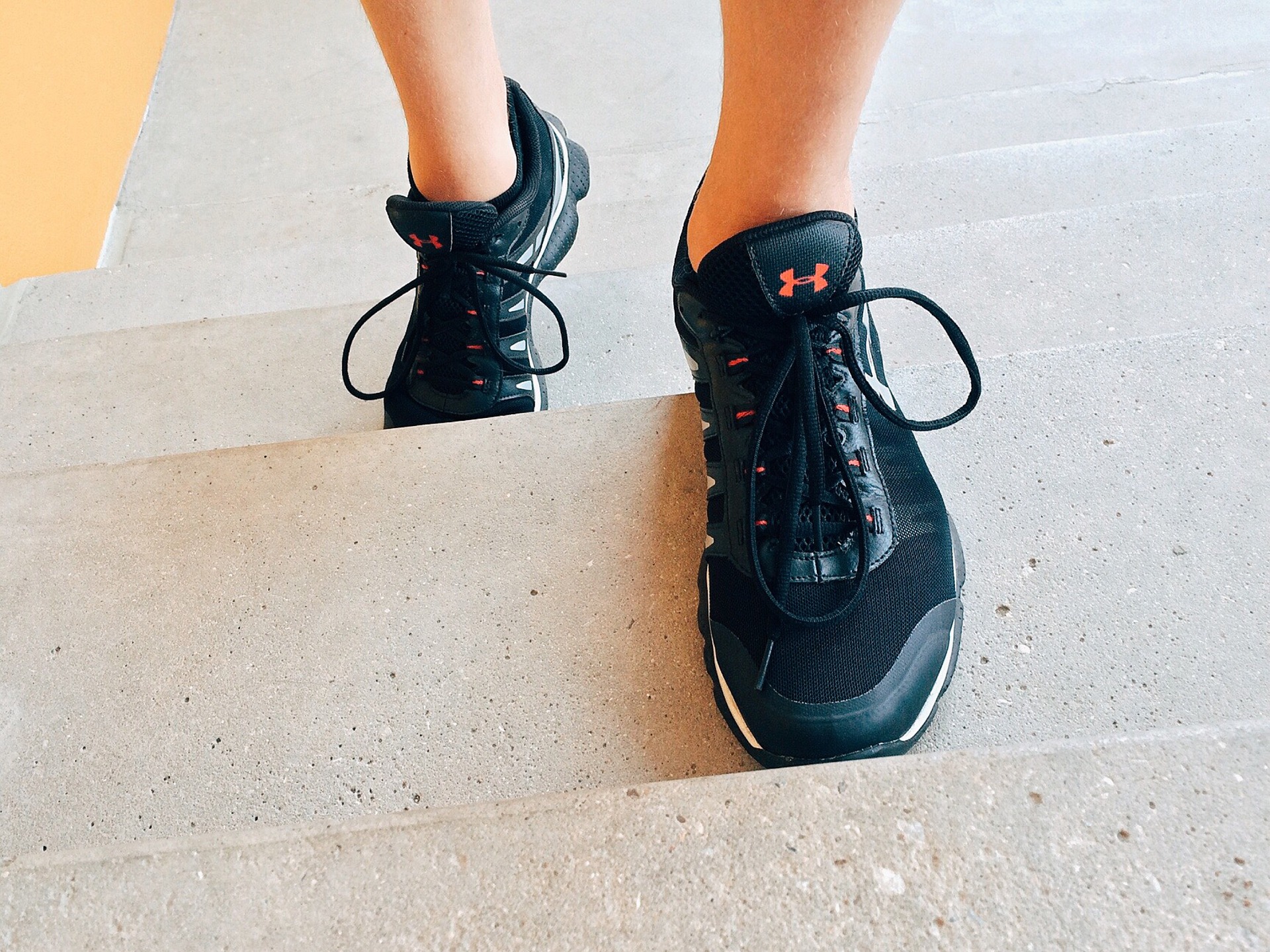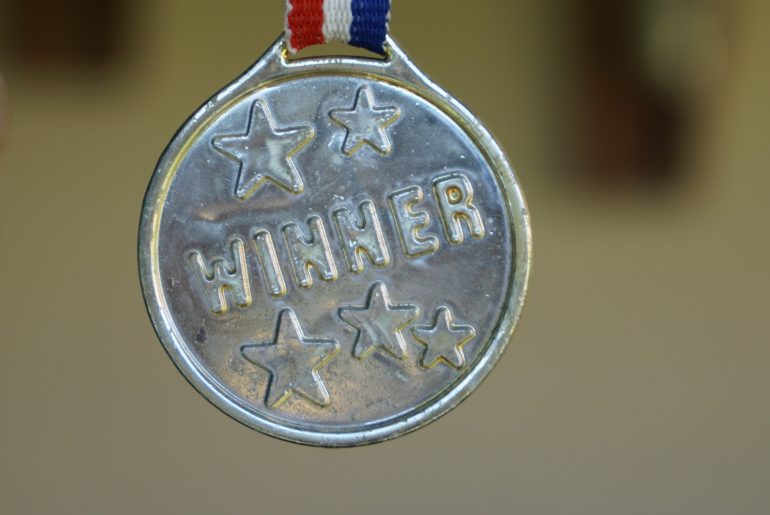Here at team BeUpstanding we are always looking for new ways to support workers to sit less and move more. You may have already read some previous blogs on this subject, like this article on mobile apps. In this next part of the blog series, Duncan Robertson, a final year UQ Bachelor of Health Science student, explores how gamification may be used to support behaviour change in the workplace. Read about his findings below.
Diving into the literature To build a greater understanding of how gamification in the workplace works I took a deep dive into the literature. From thousands of results, 42 pieces of literature with value were found across nine databases, ranging from peer reviewed academic papers to grey literature, such as blog articles and opinion pieces. These were categorised into a table and colour coded based on the usefulness of each paper with green being most useful, yellow as average, red as not so much and grey aptly being used to designate any grey literature included. The search mainly focused on the term’s ‘gamification’, ‘workplace’ and ‘physical activity’. Several variations of aforementioned search terms were used to find specific points of data including ‘sedentary behaviour’ ‘usefulness’, ‘effectiveness’, and so on. I sorted the findings into topics of “what is gamification and how does it work?” which will be explored in this blog, and “what works, and doesn’t work in gamification” which will be covered in my next blog.
What is gamification? Gamification is the term used to describe the process of motivation and engagement through game-like elements. It comes from the idea that we can slowly nudge people to change a bad habit to a healthy habit through small rewards, reminders and fun. To do this, we can use game-like elements such as points, leaderboards and importantly, competition! A key point in interventions that use gamification is that it seems like a friendly challenge between colleagues. In reality, the friendly challenge is helping us stay healthy and active. Let’s say you were competing with your colleagues to see who can walk the most steps in a day. Does it really feel like you’re exercising if you’re having fun trying to beat the rival competition? Employers have picked up that gamification in the workplace is a helpful tool to increase employee engagement, recognition, job satisfaction and self-fulfilment. That’s why so many big and well-known companies are using gamification in the workplace now. Microsoft, Amazon, Coca-Cola, Disney, Dell, Nike, Samsung, Volkswagen and many other big names all have elements of gamification in the workplace to keep their employees healthy and active.

So – how does gamification work? Findings from two articles were used to highlight some of the key psychological principles and systems of mechanics that can be used for gamification interventions.
- Individuals tend to be more motivated by losses than gains
- Incentives to complete the program were used through team points (deducted if goals failed to be met), a ranking system, punishments and rewards.
- Long term behaviour changes are often better sustained by new variables than by constant reinforcement
- Interest drops when the same system is used over time. Any interventions conducted need to have fresh additions to keep players interested.
- Individuals tend to be more motivated to change their behaviour if they have set timeframes.
- Having a set time to reach end goals is more beneficial than an ambiguous time frame. There is also the ‘fresh start effect’ where, if participants cannot reach the goal by the set timeframe, they feel demotivated to continue any longer. Having a fresh start periodically helps participants by letting them start again and restoring motivation to succeed this time.
Olympiad: Focuses on competitive mechanics: increasing productivity, identifying leaders and uniting employees as a goal.
Win-Win: Focuses on mechanics without winners and losers: pushing the whole team in one direction, gives employees feedback on work progress, improves team communication, decreases conflict, and unites the workplace.
Aesthetics: Focuses on mechanics of visualization: identifies one component of an employee or team and promotes others based on this direction, increases visible results from employees, includes the values of the company to employees to form better bonds.
Examples of gamification to promote physical activity Gamified interventions have been used to promote healthy increases in physical activity with the goal of long-term behaviour change in mind. An intervention published in the European Journal of Public Health discusses the ‘Beat the Street’ Program. This intervention was conducted in 18 communities throughout the UK where 300,053 people participated. Beat the Street aimed to turn the whole town into a game so any physical activity outside could be logged. RFID readers were placed in various places around each of the 18 communities where participants could digitally log their walking or cycling journeys. Participants could compare their progress to other participants online and see progress to their goals. Beat the Street’s success tells us that gamification can be applied beyond workplaces and expand to a population level. Early encouragement of physical activity is important as it can provide early intervention to a sedentary lifestyle. A sedentary lifestyle and sedentary behaviour are an increasing problem, particularly in workplaces where we sit at desks all day. Numerous studies have linked the sedentary lifestyle as a risk factor for noncommunicable diseases (obesity, diabetes, cardiovascular diseases) and premature death all over the world.

Health games/apps both use methods of gamification to motivate players to push themselves or to keep using them. As most games are designed to provide enjoyment and to prolong user engagement, we can find a great benefit in using them for health interventions. Nike developed Nike+ which translates physical activity into points called “NikeFuel”. These points can be used to reward participants through enrolment in competitions. A game that is well designed can provide a user with a sense of fulfilment and helps their need satisfaction. Run, Zombies is an example of a health game that continually encourages players to keep running, as if they were being chased by the living dead. This is a very overt usage of health apps. Alternatively, something like Pokemon GO managed to coerce players into walking and travelling to find new Pokemon/hatch eggs/battle without players thinking too much into their boosted physical activity.
Of course, no ‘one size fits all’ program will work in implementing gamification interventions in a workplace. Programs must be extremely flexible or even tailor-made based on the site of implementation. In the next blog, I will be looking at what works and doesn’t work to change behaviour using gamification.
This blog was written by Duncan Robertson as part of his final year placement in the Bachelor of Health Sciences degree at the University of Queensland.
![]()










Comments are closed.